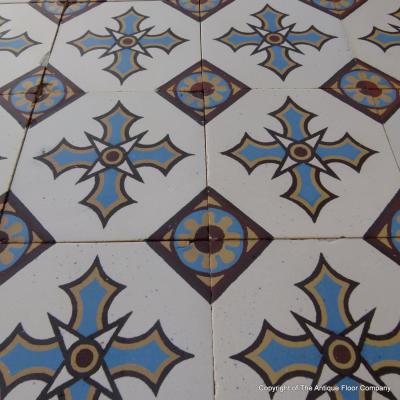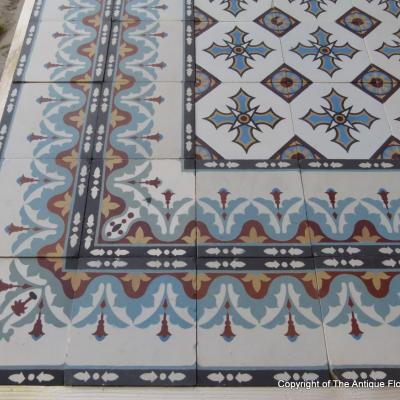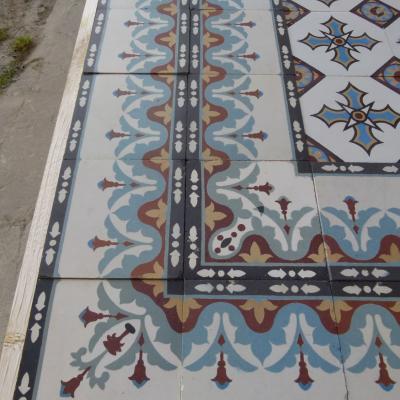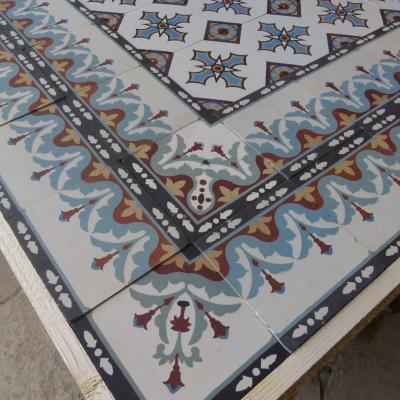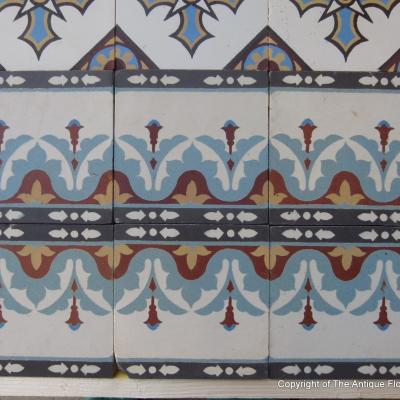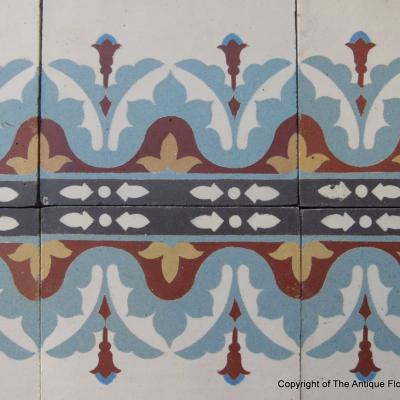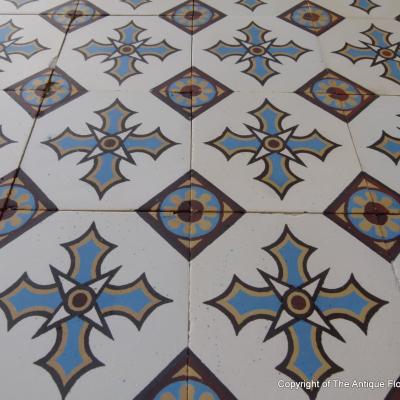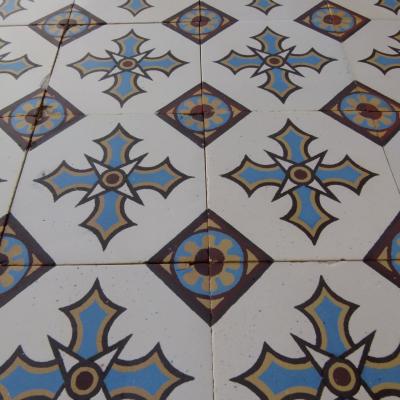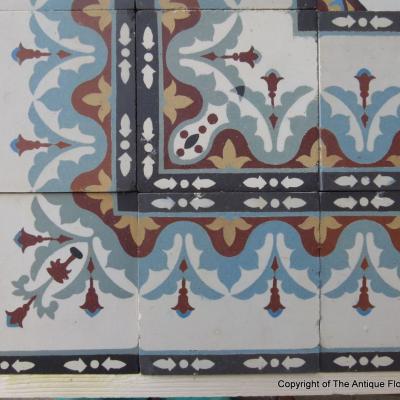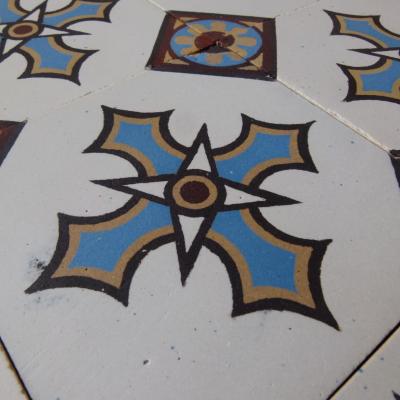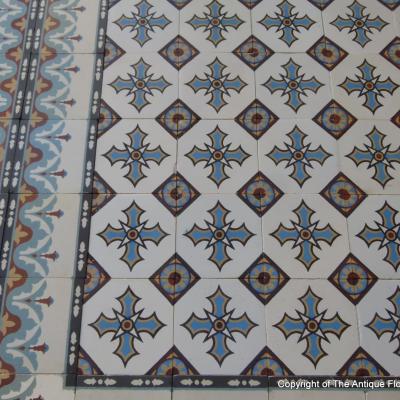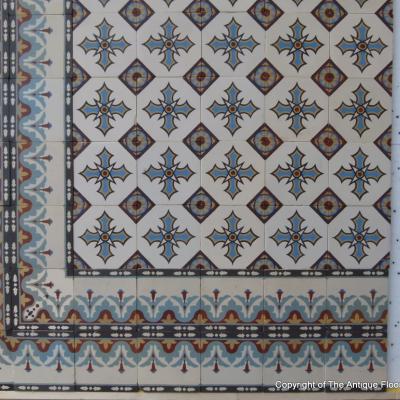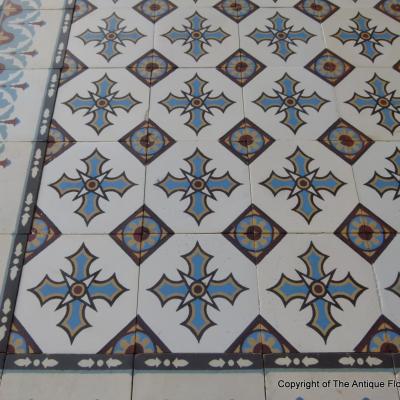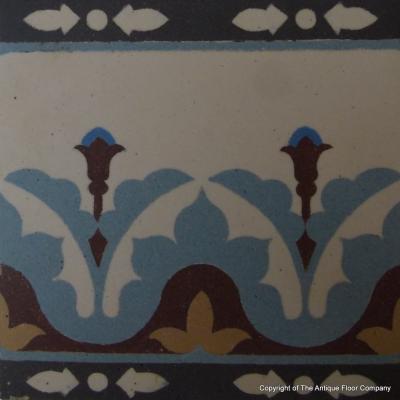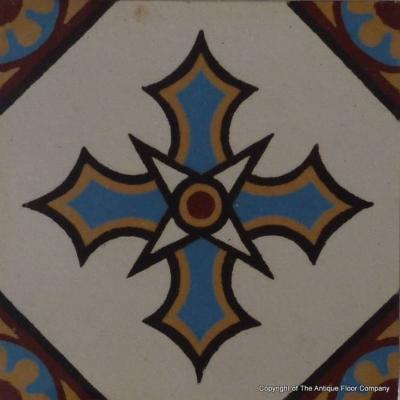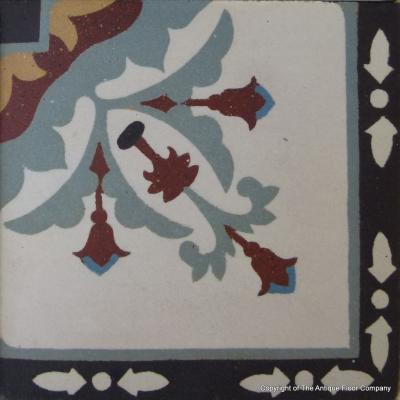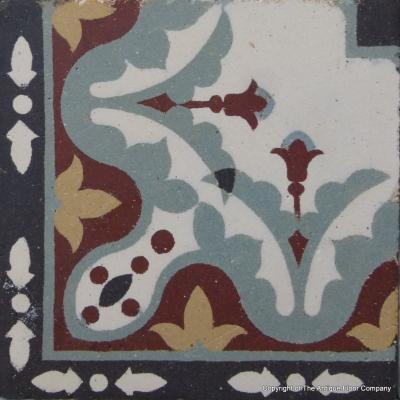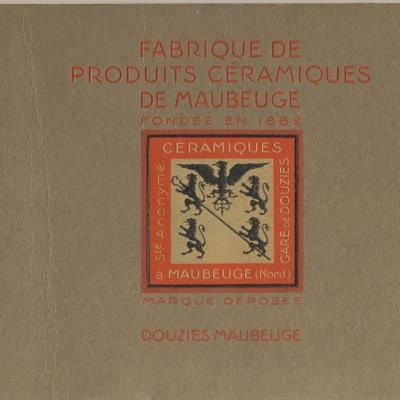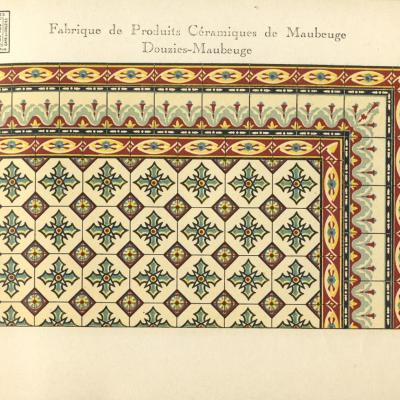A 14.7m2 / 158 sq ft. classically French ceramic with double borders
Reclaimed from the entrance hall of a residence in the village of Priez, Aisne, Hauts-de-France, this early 20th-century ceramic floor is a testament to the golden age of French decorative tilework. The floor totals 14.7m2 / 158 sq ft and features a 15cm / 5.9 inch sq classical cross field tile accompanied by a fluid, harmoniously styled border—laid in a mirrored, back-to-back configuration. Both are unmistakably French in design and palette.
These tiles were produced by the Fabriques de Produits Céramiques de Maubeuge, located in Douzies-Maubeuge, a region that flourished during the industrial expansion of northern France. Benefiting from abundant clay deposits and coal-fueled kilns, Maubeuge became a centre for high-fired, durable ceramics that adorned public buildings, private homes, and ecclesiastical spaces throughout the country. The factory’s output reflected the aesthetic currents of the time—melding classical symmetry with the organic lines of Art Nouveau.
The tiles, over 15mm / 0.6 inch thick, are quality ceramics with a good slip, which have restored beautifully, revealing a surface with consistent colouration and only minor, groutable chips or edge nibbles on a few tiles. A randomly selected 1m² / 11 sq ft section that we have photographed manifests the floors enduring patina and craftsmanship. We have successfully reclaimed all four internal and four internal border corners.
This floor is not only a functional surface but a historical artifact—an echo of early 20th-century French design sensibilities and industrial artistry. Its high-fired ceramic composition makes it suitable for both interior and exterior installation, continuing its legacy into a new century.
Tile quantities
FIELD tiles – 373 tiles – 8.4m2 / 90.4 sq ft
LARGE BORDER tiles - 271 tiles plus 4 internal & 4 external corners – 6.3m2 / 67 sq ft. or 41.8 linear metres / 137 linear ft*.
*Halve the length for a back to back border lay.
NOTE Antique tiles were most commonly made in single or two tile moulds. Before current computer automation methods their moulds were made by hand and the colour slips mixed by eye. Kiln temperatures could also be variable, as could the firing time. The result is that tiles often display subtle size and thickness variations and there can be tonal variations in colours, owing to the slip mixing and/or firing time. All of this makes these handmade tiles unique and adds to their charm. Some floors display their subtle variations in size and tones, some not, but when photographing we always take a random section of the floor so that it is representative of the whole. A tiler should always dry lay a section of the tiles to familiarise himself with them before starting to fix lay.
CE256



